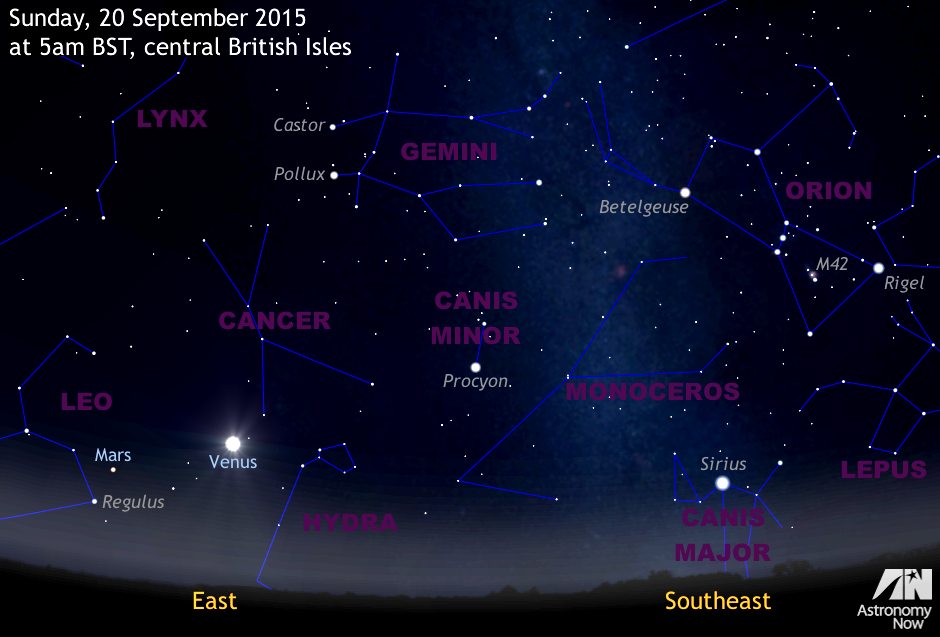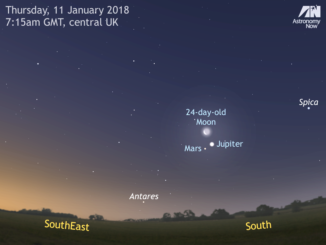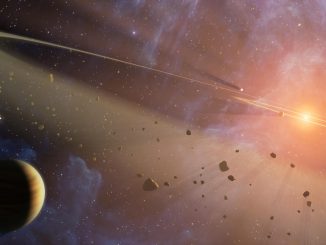
On the UK morning of 20 September, Venus lies 0.43 astronomical units, or 40 million miles (64 million kilometres) from Earth. It has a 39-arcsecond-wide, 26 percent illuminated crescent that requires a telescope magnification of just 48x to make it appear the same size as the Moon at a similar phase would to the unaided eye. As the days pass, Venus’ phase increases and its apparent size decreases as the planet’s orbital motion carries it further around the Sun and away from Earth.
Venus crosses the constellation border into Leo on 24 September. If you are up around 5am BST the following morning — Friday, 25th — don’t miss planetary sibling Mars (much fainter at magnitude +1.8) just 0.8 degrees north of Leo’s brightest star, Regulus. The conjunction actually occurs at 19:38 UT on 24 September when Mars lies 0.7 degrees from Regulus, but the pair will be below the horizon at that time as seen from the UK.
Can Venus cast a shadow?
Here is a fun experiment that you may wish to conduct if you are a particularly early riser and live in an area where there is no light pollution, especially now that the Moon is in the evening sky. Using our Almanac, select the city nearest you and note the time at which astronomical twilight starts — for the centre of the British Isles, this is currently about 4:45am BST.
Allowing at least 15 minutes for your eyes to become dark adapted before the onset of twilight, turn your back to Venus and see if you can discern your shadow cast solely by the light of Venus on an east-facing fence or wall. You may need to use your peripheral vision to see it.
I have twice seen my shadow cast by the light of Venus while working at the Mount John University Observatory under the pristine, exceptionally dark skies found at the heart of New Zealand’s South Island.
Clear (and dark) skies!
Inside the magazine
You can find out more about observing Venus and the other planets currently visible in the September edition of Astronomy Now in addition to a full guide to the night sky.
Never miss an issue by subscribing to the UK’s biggest astronomy magazine. Also available for iPad/iPhone and Android devices.




